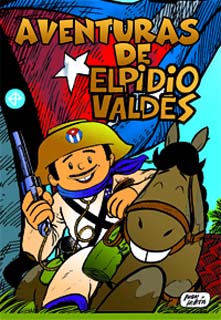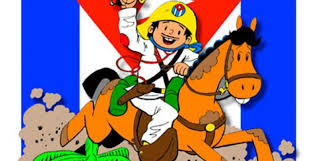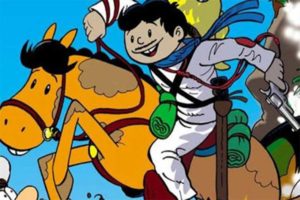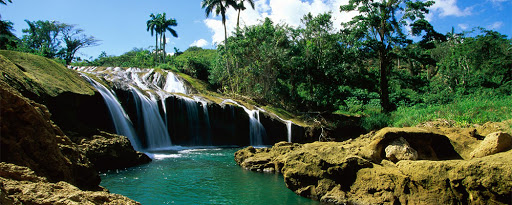 ELPIDIO VALDÉS, UN PERSONAJE CREADO POR EL CASI OLVIDADO ARTISTA JUAN PADRON.
ELPIDIO VALDÉS, UN PERSONAJE CREADO POR EL CASI OLVIDADO ARTISTA JUAN PADRON.
Desde los más pequeños hasta los adultos, en Cuba las aventuras de Elpidio Valdes han hecho disfrutar a los televidentes y lectores de sus aventuras entre risas y expectación, por su originalidad, cubanía y humor criollo, lo cual le ha permitido calar entre el gusto popular y convertirse en parte del acervo cultural del mayor archipiélago de las Antillas.
Sin aferrarse a una determinada época o generación, Elpidio Valdés es de esas creaciones originales que viven fuera del tiempo y están destinadas a dejar huellas en el imaginario popular: un personaje animado que nació para nunca morir.
Su creador fue, el casi olvidado hoy Juan Padrón, ese artistas que ya antes de morir hace unos años recorria las calles de la Habana, envejecido, condenado a vender periódicos para sobrevivir y marcado por las penurias económicas.
Hoy la Isla está llena de Elpidio Valdés y de el imaginario de los Juan Padrons que piden limosnas y sueñan con ese proyecto de nación que los llevó a los campos para sacudirse el yugo de la metrópoli.
El mambí, guerrillero independentista, manigüero, insurrecto, vio la luz por primera vez el 14 de agosto de 1970 en la revista Pionero, de la mano del caricaturista cubano Juan Padrón, y desde entonces forma parte de la identidad de la nación con sus cientos de historias llevadas a la literatura, la televisión y el cine.
Un personaje tan real como los héroes que representa cada faceta de su personalidad: irreverente y combativo, siempre listo para encarnar la idea de independencia y soberanía desde su posición de Coronel del Ejército Libertador cubano que en el siglo XIX enfrentó al colonialismo español.
Desde 1974 hasta el 2000, se realizaron dos docenas de capítulos, entre los cuales destacan aventuras como la del tren militar, el convoy, contra la policía de Nueva York, el encuentro con Palmiche (su caballo), el enfrentamiento a los rayadillos, la historia del machete, la cañonera, el asalto a Jutía Dulce, cuando lo capturan, su boda con María Silvia, entre otros.
Los parlamentos de sus historietas forman parte del argot popular del cubano de tal manera que es común escuchar en las calles frases como ‘hasta la vista, compay’, ‘a ti qué te duele, Pelirroja’, ‘oye, oye, la candela es aquí’, ‘la contrainteligencia es la contrainteligencia chavá’ o ‘caballero, al machete y con la lú apagá’.
Cada uno de los personajes de esta caricatura marcan su trascendencia, tanto los amigos como los enemigos hacen de Elpidio lo que es hoy, y sus historias necesitan a María Silvia, a su caballo Palmiche, al General enemigo Resóplez, a Pepito, Eutelia, el capitán de la contraguerrilla, Media Cara, el inventor Oliverio, Cortico, Fico…
En cinco décadas, no ha sido posible hacerlo ‘picadillo’ o ‘papilla de tortilla de puré de talco’ y los ‘leones hispanos’ no han logrado doblegar al pillo manigüero, ese que en cada aventura asegura: ‘hay mucho machete por dar todavía’.
Su numerito se regó entre la tropa, para él nunca ‘se oye clarito, clarito: áretiradaaaaaa!’, domina el rifle como Fico, se vale de las genialidades de Oliverio, ama a María Silvia, insta a Pepe a tocar siempre la corneta y solo pide ‘tintaaaaaa’, para que su imagen siga acompañando a los cubanos por otro medio siglo y más.
En lugar del país por el que luchó, el Pillo Manigüero pasa sus últimos años en una Cuba donde quienes viven mejor son aquellos que tienen moneda convertible, los sueños de equidad son cosa del pasado y la generación que ayudó a construir el sistema es un “estorbo” para las ansias de monopolio que brotan del Gobierno.
La Isla está llena de Elpidio Valdés que piden limosnas, hacen largas filas para comprar el único pan al que tiene derecho cada día y sueñan con ese proyecto de nación que los llevó a los campos para sacudirse el yugo de una potencia extranjera. Ahora, son súbditos no de la metrópoli, sino del castrismo.
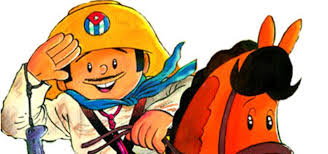 ELPIDIO VALDÉS, A CHARACTER CREATED BY THE ALMOST FORGOTTEN ARTIST JUAN PADRON.
ELPIDIO VALDÉS, A CHARACTER CREATED BY THE ALMOST FORGOTTEN ARTIST JUAN PADRON.
From the youngest to the adults in Cuba, the adventures of Elpidio Valdes have made viewers and readers enjoy his adventures amid laughter and anticipation, due to his originality, Cubanness, and Creole humor, which has allowed him to penetrate popular taste and become part of the cultural heritage of the largest archipelago of the Antilles.
Without clinging to a certain era or generation, Elpidio Valdés is one of those original creations that live outside of time and are destined to leave traces in the popular imagination: an animated character who was born to never die.
Its creator, the almost forgotten today Juan Padron, that artist who even before dying a few years ago roamed the streets of Havana, aged, condemned to sell newspapers to survive and marked by economic hardship.
Today the Island is full of Elpidio Valdés and the imaginary of the Juan Padrons who ask for alms and dream of that national project that led them to the fields to shake off the yoke of the metropolis.
The mambí, an independentist guerrilla, manigüero, insurrectionist, saw the light for the first time on August 14, 1970, in Pionero magazine, by the hand of the Cuban cartoonist Juan Padrón, and since then he has been part of the identity of the nation with its hundreds of stories taken to literature, television, and cinema.
A character as real as the heroes who represent every facet of his personality: irreverent and combative, always ready to embody the idea of independence and sovereignty from his position as Colonel of the Cuban Liberation Army that in the 19th century confronted Spanish colonialism.
From 1974 to 2000, two dozen episodes were made, among which adventures such as the military train, the convoy, against the New York police, the encounter with Palmiche (his horse), the confrontation with the rayadillos, the history of the machete, the gunboat, the assault on Jutía Dulce, when he was captured, his wedding with María Silvia, among others.
The parliaments of his comics are part of the popular Cuban slang in such a way that it is common to hear phrases such as’ Hasta la vista, compay ‘,’ what hurts you, Redhead ‘,’ hey, hey, the candle is here ‘,’ the counterintelligence is the counterintelligence chavá ‘or’ gentleman, to the machete and with the lu turn off ‘.
Each of the characters in this cartoon mark their significance, both friends and enemies make Elpidio what it is today, and their stories need María Silvia, her horse Palmiche, the enemy General Resóplez, Pepito, Eutelia, the counterguerrilla captain, Media Cara, the inventor Oliverio, Cortico, Fico …
In five decades, it has not been possible to make it ‘picadillo’ or ‘tortilla mush of talcum puree’ and the ‘Hispanic lions’ have not managed to subdue the manigüero rogue, the one who in every adventure says:’ there is still a lot of machete to give ‘.
His little act was spread among the troops, for him never ‘it is heard clearly, clearly: áretiradaaaaaa!’, He dominates the rifle like Fico, he uses Oliverio’s genius, he loves María Silvia, he urges Pepe to always play the cornet and He only asks for ‘inkaaaaa’, so that his image continues to accompany Cubans for another half-century and more.
Instead of the country for which he fought, the Pillo Manigüero spends his last years in a Cuba where those who live better are those who have convertible currency, dreams of equity are a thing of the past and the generation that helped build the system is an “ a hindrance ”to the monopoly cravings that sprout from the Government.
The Island is full of Elpidio Valdés who beg for alms, stand in long lines to buy the only bread to which they are entitled every day and dream of that national project that led them to the fields to shake off the yoke of a foreign power. Now, they are subjects not of the metropolis, but of Castroism.
Agencies/ 14ymedio/ Yoanis Sánchez, Habana/ Extractos/ Excerpts/ Liz Arianna/ YouTube/ Internet Photos/ Arnoldo Varona/ www.TheCubanHistory.com
THE CUBAN HISTORY, HOLLYWOOD.



 ELPIDIO VALDÉS, un personaje Creado por el casi Olvidado Juan Padrón. VIDEOS.
ELPIDIO VALDÉS, un personaje Creado por el casi Olvidado Juan Padrón. VIDEOS.